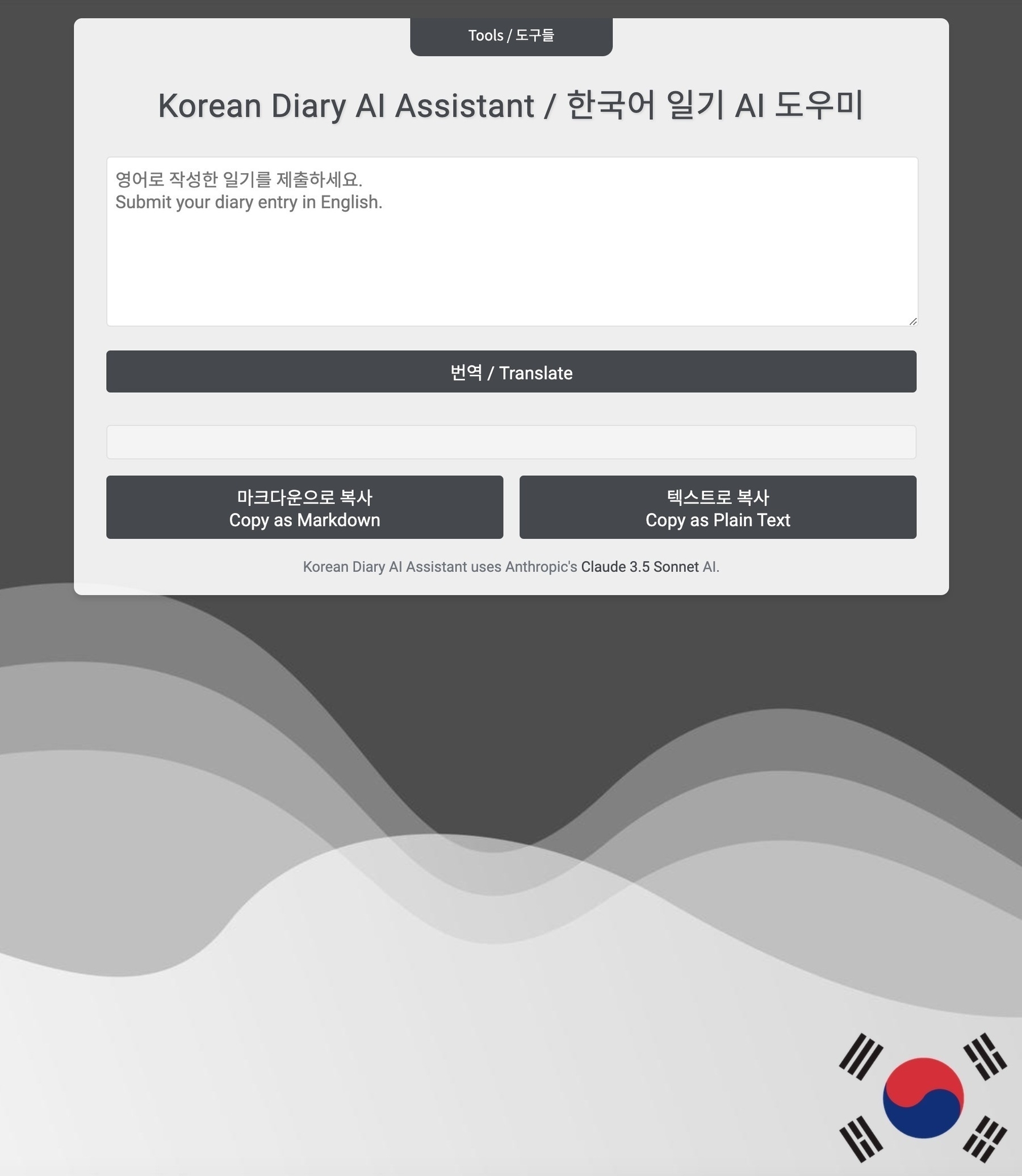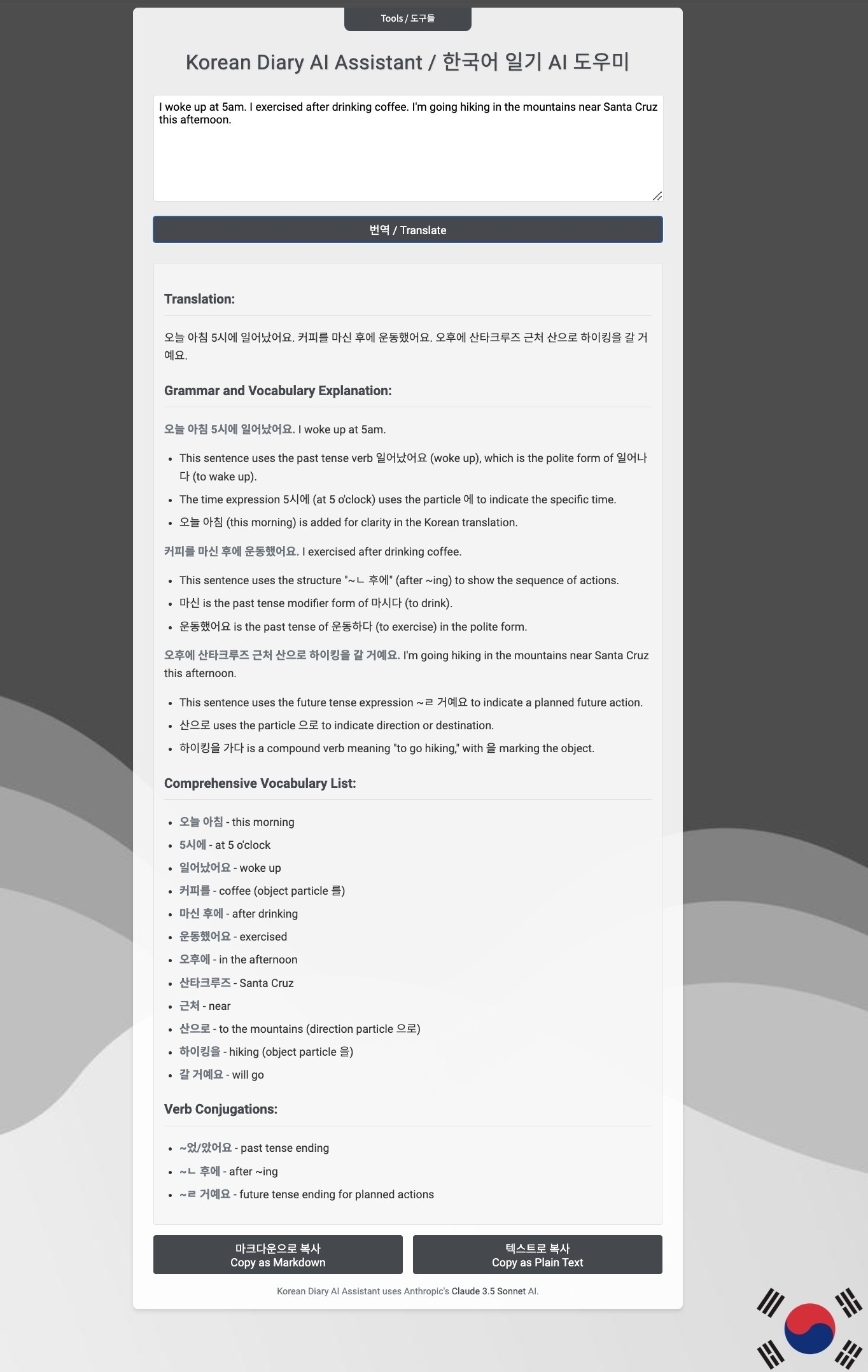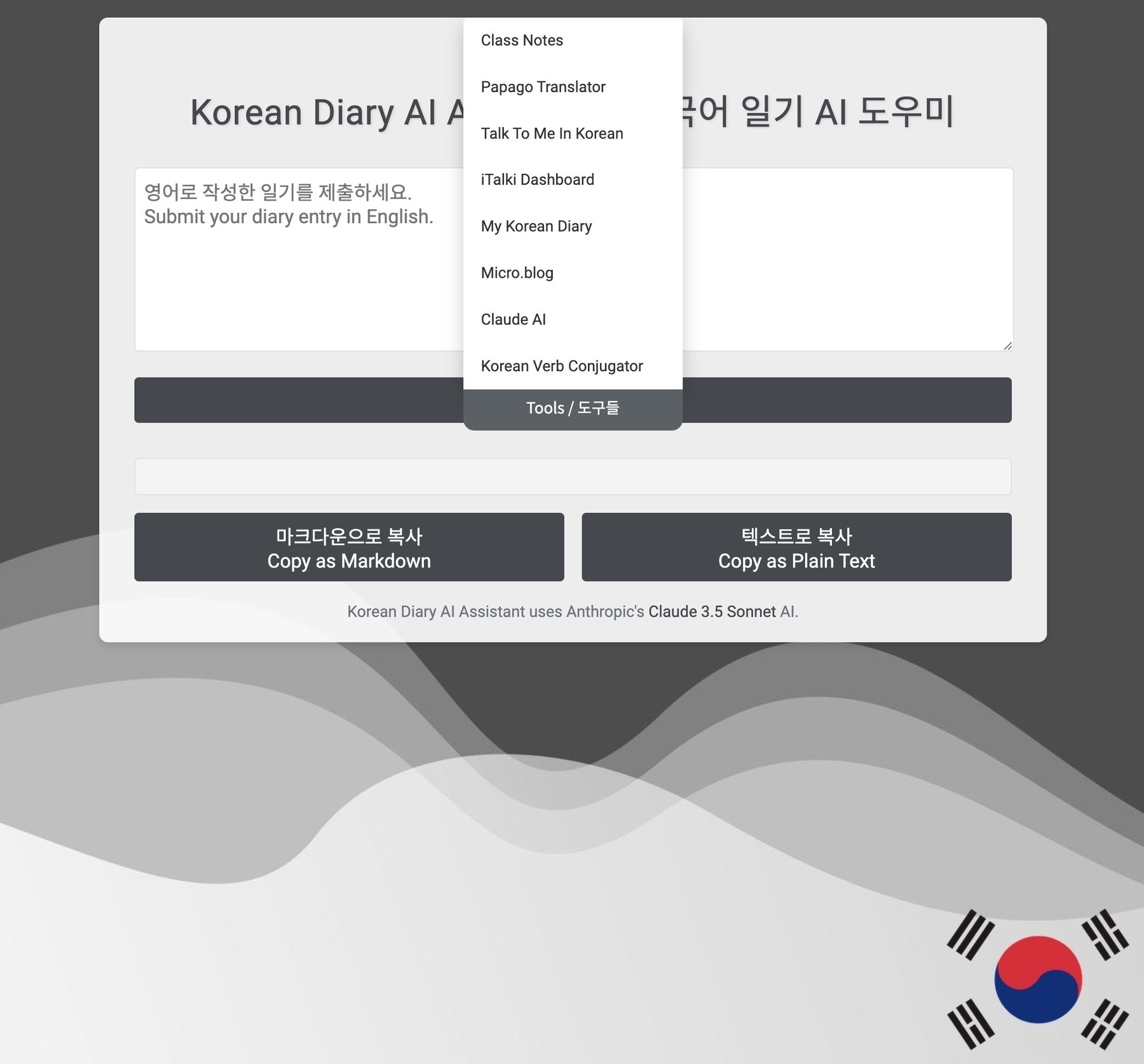I wanted to take Cursor for a spin to see if their AI-assisted development approach lives up to the hype. I develop full apps so infrequently these days that I’d have no chance of building anything in Python without investing dozens of hours in getting back up to speed. New approaches with AI, that promise to smash that barrier, have been tempting me to start developing again. The bottom line, after giving this a try, is that while you couldn’t really go from zero knowledge to web/mobile deployment without having familiarity with things like setting up an IDE, configuring Python, managing libraries, dealing with hosting providers, DNS, deploying web apps, etc., tools like Cursor can reduce the learning curve and complexity of the entire process significantly - and it can tell you how to do many of these things if you know what questions to ask.
My first simple app is a Korean Diary assistant that I built to help me write Korean sentences and break down the grammar and vocabulary in those sentences. Anthropic’s Claude 3.5 Sonnet handles the translation. It’s a fairly simple app and UI (there are some nice scrolling animation effects for the menu at the top, but that’s about it). The user can also export the translation and breakdowns via markdown that is formatted as shown on the screen or via plain text.
A few observations from the experience:



Unfortunately I can’t make this public due to the cost of the Anthropic API.